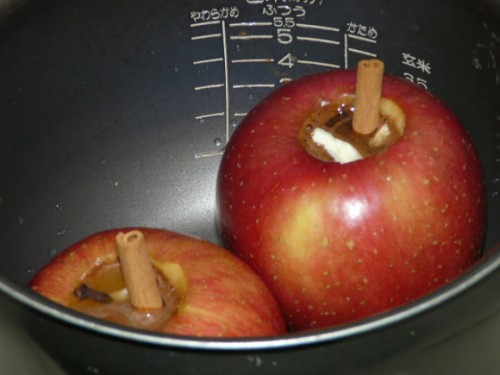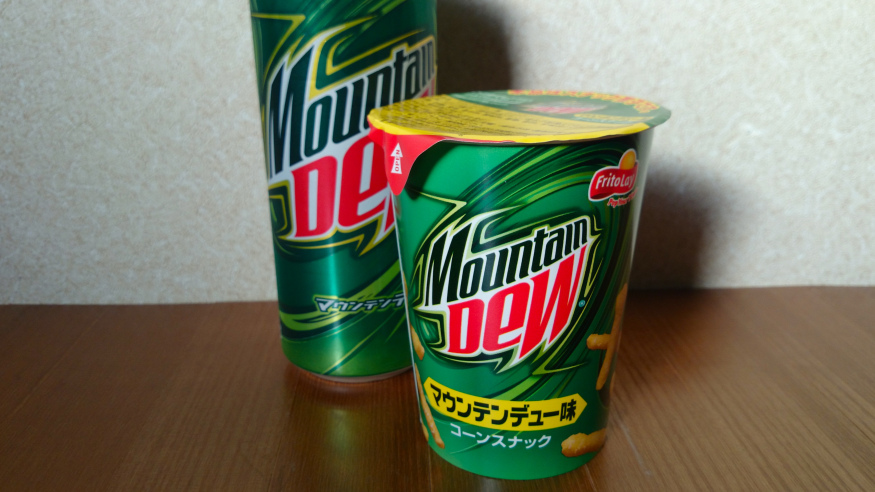I’ll Make It Myself!: Afternoon Tea x Glico’s “Sweet Love Story”
L.M. (CIR Ishikawa-ken, Anamizu, 2009-11) is the editor of The Ishikawa JET Kitchen: Cooking in Japan Without a Fight. Ze works in international student exchange; writes I’ll Make It Myself!, a blog about food culture in Japan and the US; curates The Rice Cooker Chronicles, a series of essays by JETs and JET alumni on the theme of cooking/eating and being alone in Japan; and admins The JET Alumni Culinary Group on LinkedIn.
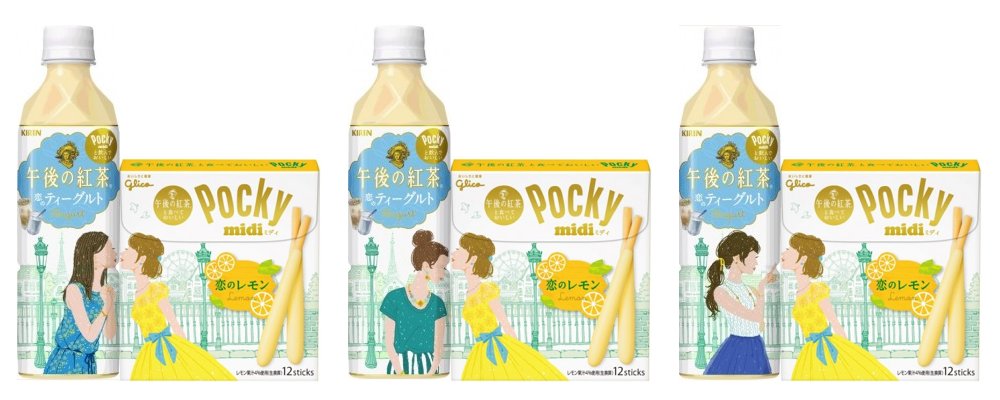
Via @eerrkkyy. Images of Aya, the Pocky character, in a yellow dress and her lips puckered up, lined up with the women characters from the Afternoon Tea bottles, thus appearing to kiss them.
On Feb. 16, 2016, Kirin’s Afternoon Tea brand and Glico’s candy Pocky released their second design/pairing collaboration with Pocky’s “Lemon Love” (恋のレモン) and Afternoon Tea’s “Teagurt” (yogurt + tea) (ティーグルト). Eaten together, the candy and the tea are supposed to taste like rare cheesecake (レアチーズケーキ) a Japanese style of cheesecake that isn’t baked but is stabilized by the addition of gelatin. The package design is also a collaboration: the Pocky boxes feature a woman (Aya) in a yellow dress on one set and a man (Tsubasa) in a yellow vest on the other. Aya and Tsubasa are positioned on the left side of their respective Pocky boxes so you can pair them with the 6 different characters featured on the right side on the drink bottle. There are three men and three women characters on the drink bottles, with one woman character and one man character on opposite sides of the same bottle, so you can turn the bottle to have the character of your choice to face the character on your Pocky box.
At first glance, it looks like Glico and Kirin have created something inclusive, and it’s really, really adorable.
At least until you start reading the copy.
I’ll Make It Myself!: Fig-Almond Muffins (Dairy-Free)
L.M. Zoller (CIR Ishikawa-ken, Anamizu, 2009-11) is the editor of The Ishikawa JET Kitchen: Cooking in Japan Without a Fight. Ze works in international student exchange; writes I’ll Make It Myself!, a blog about food culture in Japan and the US; curates The Rice Cooker Chronicles, a series of essays by JETs and JET alumni on the theme of cooking/eating and being alone in Japan; and admins The JET Alumni Culinary Group on LinkedIn.
More muffins! These fig-almond muffins are perfect for autumn and easy to make in Japan. If you’re looking for a break from all the cinnamon and pumpkin products, try one of these!
【RocketNews24】Use your rice cooker to bake delicious cinnamon honey apples
Posted by Michelle Lynn Dinh (Shimane-ken, Chibu-mura, 2010–13), editor and writer for RocketNews24. The following article was written by Oona McGee, a writer and translator for RocketNews24, a Japan-based site dedicated to bringing fun and quirky news from Asia to English speaking audiences.
Life can be tough in Japan when the weather starts getting cooler and cravings for baked comfort foods start taking hold of our thoughts. With full-size western ovens an absolute rarity in the common Japanese home, roast dinners and home-baked pies become more like lost friends from a bygone era; somewhere else but still etched in our hearts and never quite forgotten.
If the Japanese kitchen is lacking in the stove department, it makes up for it in volumes with a marvellous piece of wizardry known as the rice cooker. Its mettle has only recently been put to the test with some surprising recipes like fast food dinners and enormous pancakes of epic proportions. And now as the weather cools, there’s another easy recipe to try – soft baked cinnamon honey apples.
Get the recipe here!
I’ll Make It Myself!: Rosemary-Orange Ricotta Muffins
L.M. Zoller (CIR Ishikawa-ken, Anamizu, 2009-11) is the editor of The Ishikawa JET Kitchen: Cooking in Japan Without a Fight. Ze works in international student exchange; writes I’ll Make It Myself!, a blog about food culture in Japan and the US; curates The Rice Cooker Chronicles, a series of essays by JETs and JET alumni on the theme of cooking/eating and being alone in Japan; and admins The JET Alumni Culinary Group on LinkedIn.
Can’t find ricotta in your grocery store in Japan? Never fear! It’s a piece of cake (muffin?) to make your own in Japan. Muffins work well in the moven, too.

【RocketNews24】Grated radish art from Japan brings the cute to your favourite dishes
Posted by Michelle Lynn Dinh (Shimane-ken, Chibu-mura, 2010–13), editor and writer for RocketNews24. The following article was written by Oona McGee, a writer and translator for RocketNews24, a Japan-based site dedicated to bringing fun and quirky news from Asia to English speaking audiences.
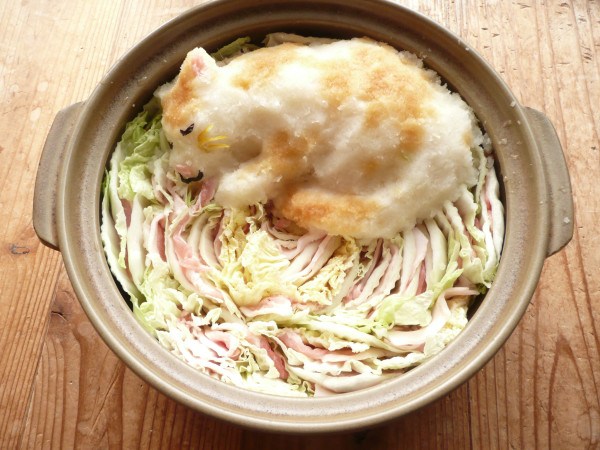
If you’ve been keeping up with the amazing 3-D latte art trends going on in Japan’s barista world right now, then you might want to take a look at their savoury counterparts popping up in grated radish form. Instead of swimming in cups of coffee, these adorable home-made creations are taking dips in winter hot pots and stews. Join us as we take a look at some of the cutest critters on offer, from Ghibli characters to sleeping cats, and see just how easy it is to cook up some edible cuteness at home.
【RocketNews24】Yes, Mountain Dew flavoured corn chips are a thing in Japan – and they taste…
Posted by Michelle Lynn Dinh (Shimane-ken, Chibu-mura, 2010–13), editor and writer for RocketNews24. The following article was written by Philip Kendall (Fukushima-ken, Shirakawa-shi, 2006–11), senior editor and writer for RocketNews24, a Japan-based site dedicated to bringing fun and quirky news from Asia to English speaking audiences.
We see a lot of weird stuff on the internet, but corn snacks made to taste – and fizz, no less – like the carbonated soft drink Mountain Dew are undoubtedly the oddest thing to happen since millions of adults across the globe simultaneously lied to their children about a bearded man sneaking into their home and leaving gifts for having refrained from murdering anyone or punching an otter since the previous December.
Nevertheless, as the internet chatter suggests, Mountain Dew corn snacks really do exist here in Japan, and so despite imagining that they’d taste about as good as minty orange juice, we tracked some down and, along with a can of actual Mountain Dew (or “Mtn Dew” as it’s now being branded in the US, because who has time fr vwls?) for comparison, conducted a little taste test of our own.
Full impressions after the jump.
【RocketNews24】10 little-known rules for eating Japanese food
Michelle Lynn Dinh (Shimane-ken, Chibu-mura, 2010–13) is an editor and writer for RocketNews24, a Japan-based site dedicated to bringing fun and quirky news from Asia to English speaking audiences.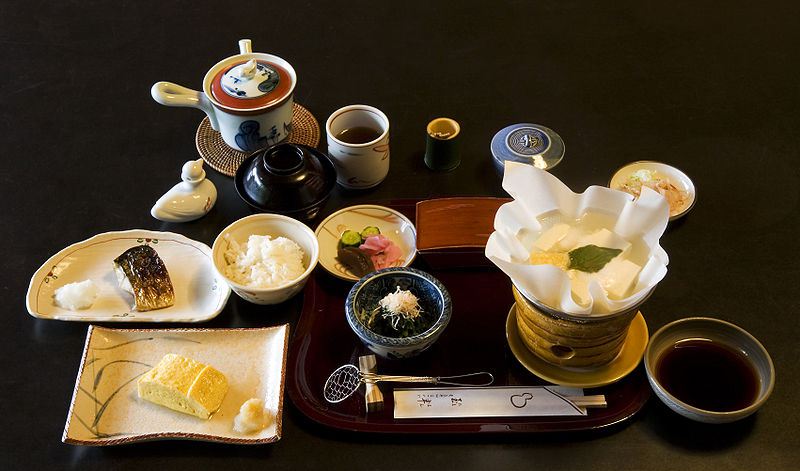
Japanese food, called washoku in Japan, has just been registered as a UNESCO Intangible Cultural Heritage, but you didn’t need an official declaration to know that sushi and tempura are absolutely delicious. But while enjoying Japanese food, have you ever mixed wasabi and soy sauce as a dip for your sushi? Or how about using your bowl as a chopstick rest? If so, you’ve committed an etiquette faux pas. Take a look at our list of 10 little-known rules for eating Japanese food and save yourself some embarrassment while enjoying a traditional Japanese meal.
I’ll Make It Myself!: Millet Muffins
L.M. Zoller (CIR Ishikawa-ken, Anamizu, 2009-11) is the editor of The Ishikawa JET Kitchen: Cooking in Japan Without a Fight. Ze works in international student exchange; writes I’ll Make It Myself!, a blog about food culture in Japan and the US; curates The Rice Cooker Chronicles, a series of essays by JETs and JET alumni on the theme of cooking/eating and being alone in Japan; and admins The JET Alumni Culinary Group on LinkedIn.
Check out the rice section in your local supermarket in Japan for other grains, and you’re often find zakkoku (雑穀) / kokumotsu (穀物), mixed grains and beans, which often includes millet. Millet is called awa (粟) or kibi (キビ) and is often sold by itself as uruchikibi (うるちキビ ) or mochi kibi (モチキビ).
I’ll Make It Myself: New Resource: Food Substitutions for Cooking and Baking in Japan
L.M. Zoller (CIR Ishikawa-ken, Anamizu, 2009-11) is the editor of The Ishikawa JET Kitchen: Cooking in Japan Without a Fight. Ze also writes I’ll Make It Myself!, a blog about food culture in Japan and the US; curates The Rice Cooker Chronicles, a series of essays by JETs and JET alumni on the theme of cooking/eating and being alone in Japan; and admins The JET Alumni Culinary Group on LinkedIn.
Throughout my four years in Japan, I had to figure out solutions to issues with ingredient availability and cooking equipment to be able to eat the food I wanted. I’ve just started a new resource with some of my tips for what to substitute and what to make at home. Some of them seem really obvious, but they weren’t to me at the time.
Fu Chanpuru Recipe
Posted by Benjamin Martin, a JET from 2008-2013 in Okinawa, publisher of the blog MoreThingsJapanese.com and author of the award-winning YA fantasy series Samurai Awakening (Tuttle).
 After nearly five years living in Okinawa, my favorite food is still Fu Chanpuru. While it might sound like part of a martial art, Fu is actually wheat gluten (so steer clear gluten intolerant people… sorry! you’re missing out). In Okinawa, you can buy Fu in packages, either in long roles, or in more compact forms. Fu is baked and dry, so you will have to hydrate it before use.
After nearly five years living in Okinawa, my favorite food is still Fu Chanpuru. While it might sound like part of a martial art, Fu is actually wheat gluten (so steer clear gluten intolerant people… sorry! you’re missing out). In Okinawa, you can buy Fu in packages, either in long roles, or in more compact forms. Fu is baked and dry, so you will have to hydrate it before use.
Ingredients
- 72g Fu- gluten
- 1 carrot cut into thin slices
- 1 large onion
- 1 packet mushrooms
- 1 bell pepper, sliced
- 1/2 small cabbage
- 170g meat (sausage, pork, etc)
- 3 eggs
- 3tbsn soy sauce
- 1tbsn garlic powder +extra
- 1tsp salt
- 2 packets dashi
- 3 small chingensai plants, cleaned and chopped (optional)
- water
- 2tbsn Extra Virgin Olive Oil
Visit MoreThingsJapanese.com for the full recipe.
Why is Japanese Food so Delicious?
Posted by Benjamin Martin, a 5th year JET on Kume Island in Okinawa, publisher of the blog MoreThingsJapanese.com and author of the award-winning YA fantasy series Samurai Awakening (Tuttle).
It’s no secret that Japanese food is popular outside of Japan. Not only is the food in-country highly rated, but there are Japanese restaurants all over the world. A lot of people wonder, why is Japanese food so good? It’s a complex answer. Many will tell you it’s umami, others the care and thought put into food, and yet more that it’s the simplicity of the dishes that highlights natural flavors.
I’m not a food expert, but I think it’s a bit of all the above.
When I lived in the States, I never ate fish. Maybe it was because I lived in the desert and all we got were frozen or river fish. Whatever the reason, I’ve had an aversion to most fish since I was young. Then, 5 years ago, I got dropped on a little island in the Pacific, their second industry being fishing. Their food was fresh, delicious, and amazing.

A week ago I had a shrimp that was still moving a bit. And IT WAS SO GOOD. My family will tell you what large strides my palate has taken over the last five years. So why was that prawn tail I had so much better than any other shrimp I’ve ever had? How did a bit of still moving shrimp overcome 23 years of stubborn dislike?
Simplicity. The shrimp was peeled, and served with a bit of soy sauce. There were no other flavors to get in the way, no cross-contamination from sauce pans, pasta, or other fish.
Umami. The briny flavor combined with the bite of soy and the sweetness of the meat meant create that unique sixth taste that everyone raves about. It’s a balance easily lost when the simplicity is left out.
Quality. Kume Island is known for miso cookies, sugar cane, and white sand beaches, but it’s also home to many kuruma prawn farms. Kuruma Prawns are similar to tiger shrimp, but a slightly different species. They’re the kind of shrimp Jiro’s restaurant used in the documentary Jiro Dreams of Sushi.
So what makes Kume Island’s shrimp so good? Checkout the video below then head over to Kumeguide.com to learn more about Kume Island Prawns.
**Please note: At least 3 shrimp were harmed in the filming of the video and writing of this post. They were delicious.**
I’ll Make It Myself!: Hug Chai Works: Get Your Bagel Fix in Kanazawa
L.M. Zoller (CIR Ishikawa-ken, Anamizu, 2009-11) is the editor of The Ishikawa JET Kitchen: Cooking in Japan Without a Fight. A writer, web administrator, and translator, ze also writes I’ll Make It Myself!, a blog about food culture in Japan; curates The Rice Cooker Chronicles, a series of essays by JETs and JET alumni on the theme of cooking/eating and being alone in Japan; and admins The JET Alumni Culinary Group in LinkedIn.
New Rice Cooker Chronicles submissions always welcome. Just e-mail it to jetwit [at] jetwit.com.
Hug Chai Works (ハグチャイワークス)
Location: Sainen, Kanazawa (Kencho Road/60 near Kanazawa Station)
Type: Lunch, café
Dietary: Meals are not vegetarian-friendly, but bagels and baked goods are.
Language: Japanese
I’ll Make It Myself!: Mameshiba Cupcakes
L.M. Zoller (CIR Ishikawa-ken, Anamizu, 2009-11) is the editor of The Ishikawa JET Kitchen: Cooking in Japan Without a Fight. A writer, web administrator, and translator, ze also writes I’ll Make It Myself!, a blog about food culture in Japan; curates The Rice Cooker Chronicles, a series of essays by JETs and JET alumni on the theme of cooking/eating and being alone in Japan; and admins The JET Alumni Culinary Group in LinkedIn.
New Rice Cooker Chronicles submissions always welcome. Just e-mail it to jetwit [at] jetwit.com.
ね、知っている?(Hey, did you know?)
Posted by Benjamin Martin, a 5th year JET on Kume Island in Okinawa, publisher of the blog MoreThingsJapanese.com and author of the YA fantasy series Samurai Awakening (Tuttle).
 By far my most popular post on More Things Japanese is my easy recipe for Chahan. This time around, I wanted to share a slightly more time-consuming, but even tastier recipe for those of you who love Chahan. As with my advanced recipe for miso soup, it is all made from scratch, including the dashi. This take on Fried Rice is a mix of the local flavors I’ve learned on small Okinawan islands, and a bit of flair from me as well. I hope you enjoy.
By far my most popular post on More Things Japanese is my easy recipe for Chahan. This time around, I wanted to share a slightly more time-consuming, but even tastier recipe for those of you who love Chahan. As with my advanced recipe for miso soup, it is all made from scratch, including the dashi. This take on Fried Rice is a mix of the local flavors I’ve learned on small Okinawan islands, and a bit of flair from me as well. I hope you enjoy.
Ingredients
- 5 cups water
- 1 piece conbu
- 1 cup packed bonito flakes
- 1/4 cup extra virgin olive oil
- 1/2 onion
- 170g sausage
- 1 pack mushrooms
- 1tsp salt
- 1 carrot
- 1 clove garlic
- 1 package nirai
- 1 cob fresh corn
- 1/2 cup chopped green onions
- 1/2 cup chopped nira (a scallion-like leaf)
- 5 eggs
- 1tbsp sake
- 6 tbsp soy sauce
- 1/2 tsp ginger
- 2tbsp mustard
- 2tbsp honey
- 1/2 tsp pepper
Directions
For detailed directions visit MoreThingsJapanese.com
How Miso is Made – A Visit to a Local Factory
Posted by Benjamin Martin, a 5th year JET on Kume Island in Okinawa, publisher of the blog MoreThingsJapanese.com and author of the YA fantasy series Samurai Awakening (Tuttle).
 Ever wonder what miso is? If you’ve been to Japan or eaten at a Japanese restaurant, you’ve likely had or at least seen miso. I remember my first time having miso soup. I was in college trying out a little Japanese restaurant that had popped up just outside the UofA. I was pretty green as far as Japanese food went so I ordered teriyaki chicken (I’m sure the chef was thinking all kinds of bad things about me). Before the meal, a bowl of soup appeared. It was a clear broth with some kind of brown particles floating in it. I tried the soup, but the flavor was so different from anything I had eaten before. I didn’t really enjoy it, but then it quickly grew on me. Now, I look forward to miso, be it in my soup, as a glaze for fish, or in the middle of a rice ball.
Ever wonder what miso is? If you’ve been to Japan or eaten at a Japanese restaurant, you’ve likely had or at least seen miso. I remember my first time having miso soup. I was in college trying out a little Japanese restaurant that had popped up just outside the UofA. I was pretty green as far as Japanese food went so I ordered teriyaki chicken (I’m sure the chef was thinking all kinds of bad things about me). Before the meal, a bowl of soup appeared. It was a clear broth with some kind of brown particles floating in it. I tried the soup, but the flavor was so different from anything I had eaten before. I didn’t really enjoy it, but then it quickly grew on me. Now, I look forward to miso, be it in my soup, as a glaze for fish, or in the middle of a rice ball.
I’ve studied Japan for a long time, and I’ve always translated miso as ‘fermented soy bean paste.’ Just like soy sauce, miso is made from soy, but it is only part of the story. A few weeks ago, my island had its sangyo matsuri where I was able to meet one of the people who make miso here (Kumejima‘s miso is quite popular). I was interested in the process so I wrangled a visit to the factory.
One of the first things I found out is that they don’t make miso all the time. Traditionally, miso was something made at home. Each family would make their own miso for their own use. As with so many things, the miso making skills are fading with the convenience of store-bought foods. Still, there are a few places that still do local miso. Since it is a fermented product, the temperature is an important factor, thus miso can only be made in moderate seasons. If it gets too cold, or too hot, the fermentation wont go on as well.
The process also takes more than three months. At the small local factories, they make large batches two or three times a year as needed. The rest of the time, they focus on other projects or on creating new items.
For more about how miso is made, including pictures, a walk-through of the process, and great miso based recipes, visit MoreThingsJapanese.com


